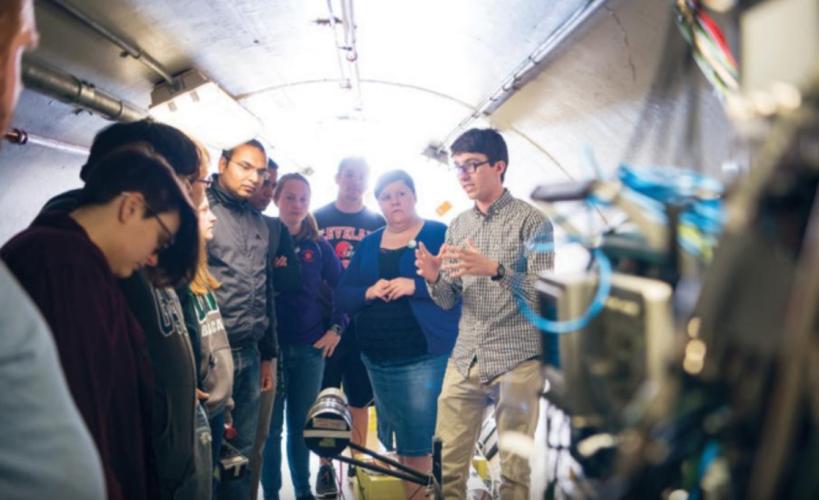
Ohio University achieves prestigious Carnegie R1 Classification, joins highest level of research institutions in the nation

Ohio University has joined the highest level of research institutions in the country by earning the R1 Classification (very high research activity) in the latest Carnegie Classification of Institutions of Higher Education.
Institutions holding the Carnegie R1 designation constitute the top tier of research universities as measured by expenditures supporting research and development, conferral of research doctoral degrees, and employment of Ph.D.-level personnel engaged in research.
“This is a significant milestone for our great University. This Carnegie R1 classification amplifies OHIO’s ability to attract additional outstanding faculty and more research dollars, which will ultimately lead to innovation and discovery to the benefit of our global society,” Ohio University President Hugh Sherman said. “This distinction affirms OHIO’s status as a high-quality institution of higher learning and exemplifies our commitment to excellence in research and discovery as well as the broader student experience. I am proud of our students, faculty, and staff who have made significant impact through meaningful research.”
OHIO becomes one of just 141 total institutions of higher education with a R1 classification in the nation. This designation demonstrates Ohio University’s position as a leader in research and scholarship.
“Designation as an R1 institution is a major mark of distinction for Ohio University,” Executive Vice President and Provost Elizabeth Sayrs said. “We are proud that OHIO’s long-standing commitment to excellence in advancing knowledge for the benefit of our students and society at large is now recognized through the Carnegie Classification.”
Ohio University is leading the way in various fields of research and innovation. The University is recognized internationally for research and scholarship in areas including avionics, biotechnology, communication, environmental studies, history, pipeline corrosion, physics, and psychology; and boasts world-class fine arts programs that include ceramics, film, and printmaking.
In recent history OHIO researchers have pioneered new interventions to help children with behavioral disorders succeed in school, revealed new insights into the origins of modern concepts of free speech, led major investigations into the responses of biological systems to spaceflight environments, and developed novel methods for using mining waste to generate innovative construction materials.
The University’s success in leveraging its expertise and research assets for broad benefit was recently acknowledged by the Association of Public and Land-Grant Universities, through conferral of its top Innovation & Economic Prosperity Connections award for excellence in programs supporting regional economic development.
Ohio University’s efforts to expand the frontiers of knowledge are deeply intertwined with the opportunities it provides to students at all levels through their academic programs, reflected in record-setting levels of participation by undergraduates in research experiences, and in graduates of masters and doctoral programs who have achieved international recognition that includes a Nobel Prize.
The University is investing in new programs and initiatives to ensure that the institution remains at the forefront of discovery and innovative academic programs. Examples include hiring new faculty across multiple colleges in focused areas related to diabetes, pain and aging, and health disparities, while also creating new interdisciplinary degree programs in environmental science and sustainability and in data science and analytics.
Ohio University is one of only five institutions of higher learning in the state of Ohio with an R1 designation.